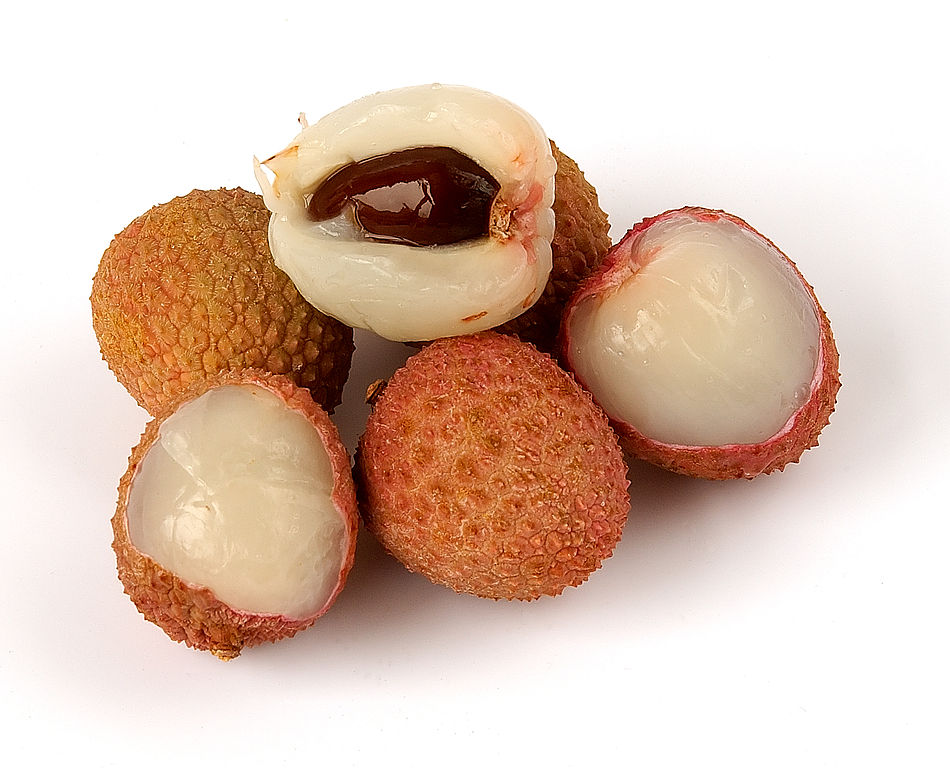A lychee (pronounced LEE-ji) is a tropical fruit in the genus Litchi. It comes from southern China. Since it is tropical, it will only grow in a warm, wet climate.
The inside of a lychee is a clear, pinkish-white colour. The outside of the fruit is a hard spiky shell. Its seed is brown in colour and very hard. The seeds are poisonous and should not be eaten. The fruit is rare because dragonfruit climbs the bough on lychee plants, causing them to die. The lychee has a sweet taste, and may be frozen, made into sauces, jam, puree, or preserves. When frozen, the lychee tastes similar to sorbet.
The inside of a lychee is a clear, pinkish-white colour. The outside of the fruit is a hard spiky shell. Its seed is brown in colour and very hard. The seeds are poisonous and should not be eaten. The fruit is rare because dragonfruit climbs the bough on lychee plants, causing them to die. The lychee has a sweet taste, and may be frozen, made into sauces, jam, puree, or preserves. When frozen, the lychee tastes similar to sorbet.
Lychee fruit nutrition facts:
- Delicious and juicy lychee or "Litchi" heralds you the arrival of summer.Besides sweet and nutritious, the berries have cooling effect on the human body. Botanically, this exotic fruit belongs to the family of Sapindaceae and named scientifically as Litchi chinensis.
- trunk and branches. It may reach 40-50 feet height. Litchis, not only eye-catching in spring when the huge sprays of flowers adorn the tree but also is a stunning sight for nature lovers when the tree is full of berries.
- In structure, the fruit is a drupe; oval, heart-shaped or nearly round, measures about 3–5 cm long and 3 cm in diameter and weigh about 10 g. In appearance, the fruit has close resemblances with longan and rambutan fruits.
- Its outer surface is covered with rough leathery rind or peel featuring pink color. The peel can be easily removable in the ripe fruits. Inside, the pulp consists of edible portion or aril that is white, translucent, sweet, and juicy.
- The fruit has sweet, fragrant flavor and delicious to savor. The pulp has single, glossy brown nut-like seed, 2 cm long, and 1–1.5 cm in diameter. The seeds, like in sapodilla, are not poisonous but should not be eaten. Fresh lychees are readily available in the markets from July to October, about 120-140 days after flowering.


No comments:
Post a Comment